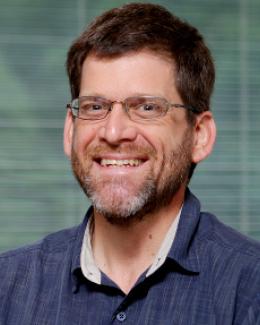Near-surface, airborne, and satellite remote sensing can provide insights into ecological processes while reducing experiment costs

The Science
Global change experiments are often spatially and temporally limited because they are time- and labor-intensive, and expensive to carry out. Field, experimental, and modeling researchers from US universities and DOE National Laboratories gathered at a workshop to share ideas on how incorporation of remote sensing techniques into global change experiments can complement traditional study methods and provide additional information about Earth system processes. They found that near-surface remote sensing techniques—including spectroscopy, thermal and fluorescence imaging, terrestrial laser scanning, digital repeat photography, and unmanned aerial systems—offer novel information and improve the context, accuracy, and completeness of traditional measurements. Airborne and satellite data can be used to understand the representativeness of sites and search for patterns of change.
The Impact
This community of researchers agreed that making use of such remote sensing techniques can reduce both costs and effort in global change experiments while providing additional information and a wider context to traditional measurements. They further found that use of airborne and satellite remote sensing data during sampling site selection, during the design of the experiment or sampling effort, can greatly improve the ecological representativeness of measurements in future experiments.
Summary
Global change experiments designed to identify important ecological responses to environmental change are often restricted to small spatial scales and short time periods due to costs, limiting the applications and inferences that can be drawn from them. Remote sensing techniques can be applied to expand the utility of site measurements and provide additional insights into Earth system processes. In this paper, researchers describe five emerging near-surface remote sensing techniques: spectroscopy, thermal and fluorescence imaging, terrestrial laser scanning, digital repeat photography, and unmanned aerial systems. They further discuss how those data may be applied to retrieve novel information to complement traditional measurements and how airborne and satellite data can be used to understand the representativeness of study sites and monitor for early warnings of changes and disturbance events that might reinforce other observations. This research concludes by recommending prioritizing expanded communication and collaboration among remote sensing scientists, modelers, and laboratory and field ecologists at all stages of global change experimentation.
Publication
Shiklomanov, A. N., B. A. Bradley, K. M. Dahlin, A. M. Fox, C. M. Gough, F. M. Hoffman, E. M. Middleton, S. P. Serbin, L. Smallman, W. K. Smith (2019), Enhancing Global Change Experiments through Integration of Remote-sensing Techniques, Front. Ecol. Environ., 17(4):215–224, doi:10.1002/fee.2031.
Contacts (BER PM)
Dr. Renu Joseph
SC-23
Renu.Joseph@science.doe.gov (301-903-9237)
(Author Contact)
Dr. Alexey N. Shiklomanov
Joint Global Change Research Institute
Pacific Northwest National Laboratory
alexey.shiklomanov@pnnl.gov (301) 314-6713
Dr. Forrest M. Hoffman
Climate Change Science Institute (CCSI)
Oak Ridge National Laboratory
forrest@climatemodeling.org (865) 576-7680
Dr. Shawn P. Serbin
Environmental & Climate Sciences Department
Brookhaven National Laboratory
sserbin@bnl.gov (631) 344-3165
(PI Contact)
Dr. Forrest M. Hoffman
Climate Change Science Institute (CCSI)
Oak Ridge National Laboratory
forrest@climatemodeling.org (865-576-7680)
Funding
This paper was initially conceived at the INTERFACE workshop “Frontiers in terrestrial climate feedbacks: Integrating models and experiments to explore climate feedbacks in a managed and warming world,” funded by the US National Science Foundation (NSF) grant 0955771. FMH was supported by the Reducing Uncertainties in Biogeochemical Interactions through Synthesis and Computation (RUBISCO) Scientific Focus Area, which is sponsored by the Regional and Global Model Analysis (RGMA) Program. SPS was supported by the Next Generation Ecosystem Experiments (NGEE Arctic and NGEE Tropics), which are sponsored by the Terrestrial Ecosystem Science (TES) Program. RGMA and TES are part of the Climate and Environmental Sciences Division (CESD) of Biological and Environmental Research (BER) in the US Department of Energy Office of Science.
Related Links
- Reducing Uncertainties in Biogeochemical Interactions through Synthesis and Computation (RUBISCO) Scientific Focus Area
https://www.bgc-feedbacks.org/


